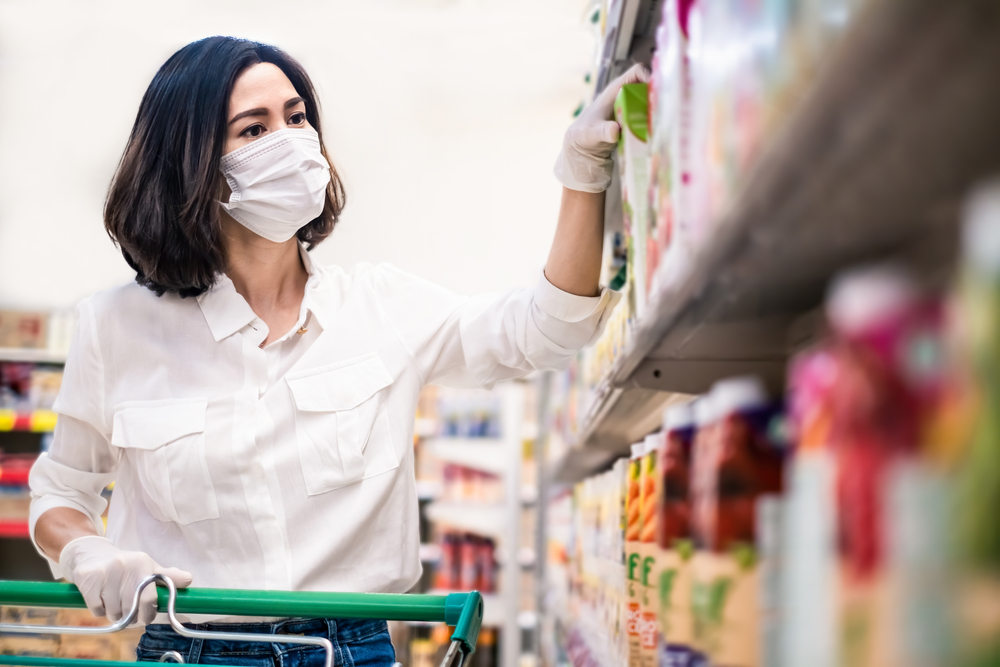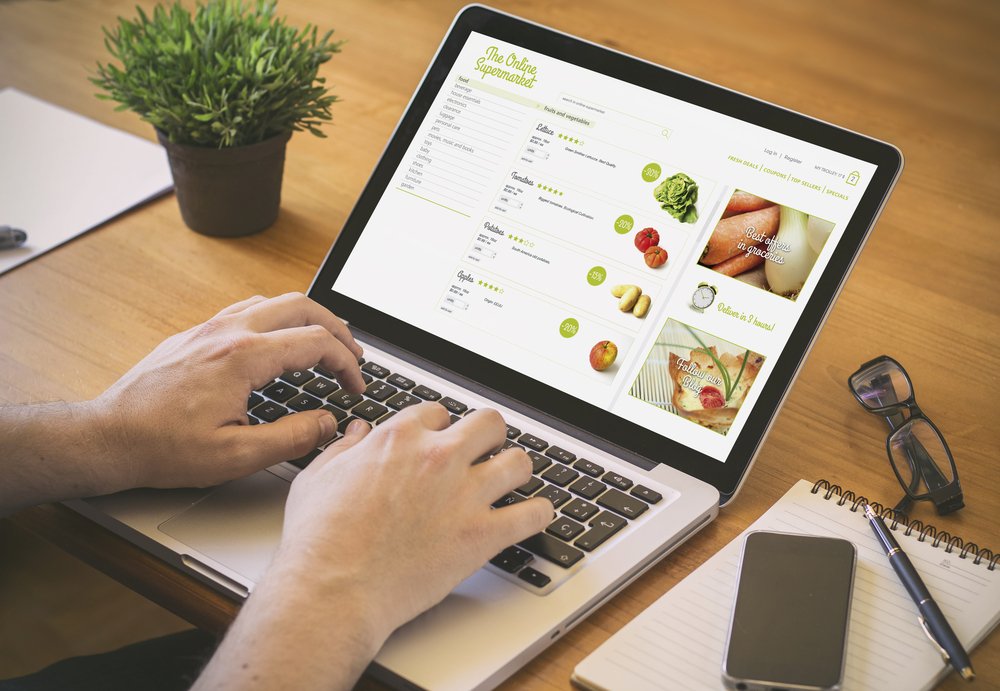Prior to the unprecedented crises of 2020, many of us enjoyed going to the grocery store multiple times a week, throwing dinner together at the last minute or opting to eat out when cooking wasn’t on the table. Since March, when COVID-19 came to America, many of those carefree habits and grocery shopping preferences have changed for consumers around the country. How consumers buy their groceries has seen significant adaptations from consumers and retailers, due to quarantines that required minimal in-person shopping. Initially, consumers adopted these new behaviors because they had to, but many grocery shopping preferences are sticking around even as life normalizes around the country.
Consumers Are Still Going To The Store Less, And Marketers Must Be Thoughtful With Strategic Campaigns
In the beginning of the pandemic, pantry stocking was hot. Consumers were hitting up grocery stores less, but buying a lot more than had been typical, a habit that has continued somewhat.

Less foot traffic down grocery store aisles means grocery, CPG and related marketers need consumer outreach to be more proactive, meaningful and effective, so campaigns have a greater impact when consumers do go shopping. Geotargeting techniques that serve ads when consumers are in certain zip codes, or geocaching campaigns to display offers when shoppers are inside grocery stores, can be efficient ways to offer promotions and discounts on certain products or at certain locations.
An interesting change that has taken place during pandemic shopping, is consumer willingness to try new products. According to research by consulting firm McKinsey, “This general change in [shopping] behavior has also been reflected in a shattering of brand loyalties, with 36% of consumers trying a new product brand and 25% incorporating a new private-label brand. Of consumers who have tried different brands, 73% intend to continue to incorporate the new brands into their routine.” By offering promotions and deals at the right time to the right audience, brands may be able to convert consumers to their products and gain lasting loyalty.
In-Store Fulfillment And Check-Out Options Give Retailers Differentiation Opportunities
Among the shopping behaviors likely to stick around, at least while people are still exhibiting caution about coronavirus, is contactless pick-up and checkout options. McKinsey noted, “79% of consumers intend to continue or increase their usage of self-checkout in retail after COVID-19.” Many retailers have increased the amount of self-checkout stations in stores and developed touchless app-based payment solutions that allow consumers to get in and out of stores more quickly. An article by Kim Severson for The New York Times reported, “Health concerns have also accelerated the growth in payment apps and self-checkout. Walmart is testing a new system that replaces traditional checkout lines with an open plaza ringed by 34 terminals. Shoppers can scan their purchases, or wave down an employee to do the scanning for them.”
Delivery options have become an intrinsic part of grocery shopping preferences during COVID-19 and into the new normal. For example, buy online pick up in store (BOPIS) increased 259% in August year over year and is particularly popular with big retailers like Target and Walmart where consumers can get groceries and household items. In-store delivery and curbside pick-up are solutions that allow consumers to quickly get their grocery items locally without supply or shipping worries, and a minimum of crowd contact. These last-mile options are likely to be popular during the holidays, as consumers stock up for celebrations, with grocery stores looking to offer multiple delivery and pick-up solutions as differentiating factors.
The Very Rapid Ramp Up Of Online Grocery Shopping Offers Opportunities For Retailers To Innovate

Online grocery shopping, long anticipated to take off, needed a pandemic to truly push it to the forefront for consumers. A year ago, online shopping was about 3% of all grocery sales, or $1.2 billion. In June 2002, online grocery sales hit $7.2 billion, with adoption of online grocery shopping across generations including seniors. The growth of online grocery shopping has led retailers and grocery stores to introduce new incentives and services that facilitate the most seamless and convenient grocery shopping experience. For example, Walmart recently announced Walmart+, which will cost $98 a year, or $12.95 a month, and give members same-day delivery on 160,000 items.
As consumers head into the holidays, 50% say they will likely do a hybrid of in-store and online shopping for their holiday foods, which could allow digital marketers various engagement touch points with consumers seeking out specific holiday items — particularly for consumers looking for deals and comparison shopping, due to financial worries moving into the holidays
It’s possible that grocery shopping preferences will slide back to what they were for consumers before the pandemic, especially for older consumers or people who are less concerned about the virus. As with so much during this strange time, digital marketers can prepare for the future with innovations and strategic marketing strategies that will appeal to consumers in the future, but must also meet consumers where they are right now. That means offering meaningful promotions, easily executed transactions, pick-up and delivery options and, ultimately, an understanding that convenience, affordability, supply and safety are still top of mind for many shoppers.
Seeking New Ways To Maximize Your Customer Acquisition?
Digital Media Solutions (DMS) is a technology-enabled, data-driven performance advertising solutions provider connecting consumers and advertisers. Contact DMS today to learn how our first-party data asset, proprietary technology and expansive digital media reach can help you scale your customer acquisition results.



